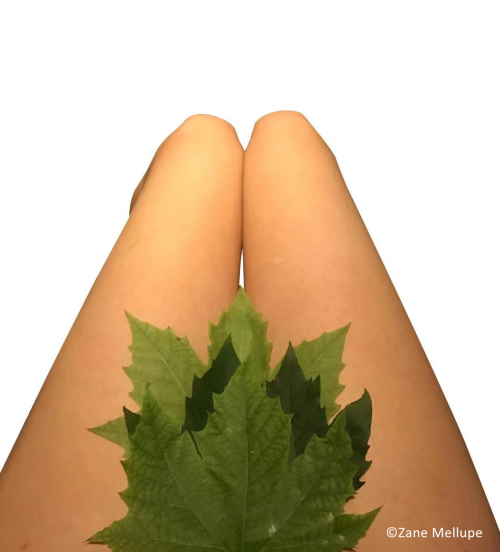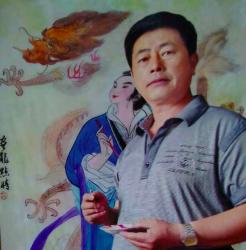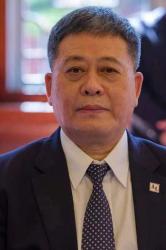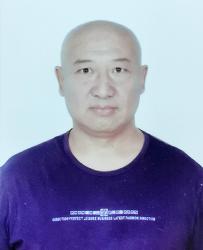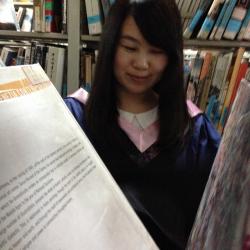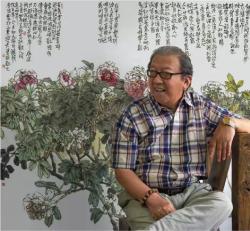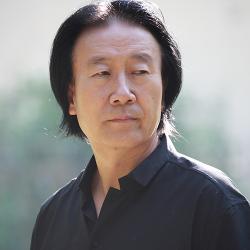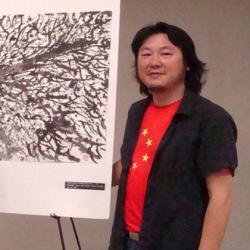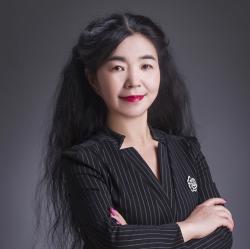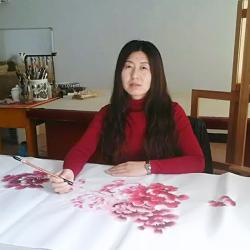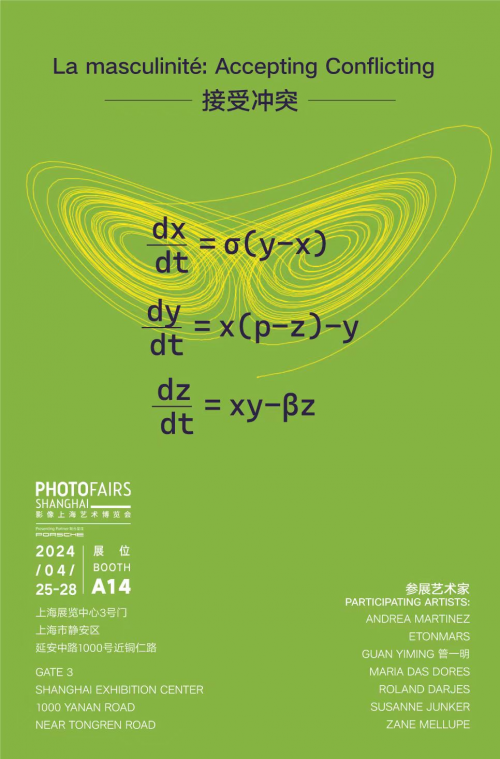
The year 2024 marks the 60th anniversary of diplomatic ties between China and France. The relationship has fostered a great expansion of consciousness in different fields, this time emphasizing humanities and art not only between China and France but also the East and the West.
“La masculinité: Accepting Conflicting" is an exhibition that is a part of the Antonyms Actonition that is advocating for inclusiveness and gender equality. The exhibition is shown in Photofairs Shanghai 2024 at booth A14, from April 25th to April 28th.
Accepting conflicting views and accepting contradictions allows us to question and develop since the state of our being itself should not be perceived as constant but rather an ever-changing contextual concept of emergence, where norms are just a bare reference, and not the representation of truth. Conflicts can help inspire creativity, provide clarity, restore trust, and build self-awareness.
We are all beautiful, conflicted contradictions, and being able to accept others as such is what makes us human.
For centuries, France has been a place where international artists would meet. This time the artists who are being presented are the ones who have found their way together through a French connection in China: Andrea M. Figueiredo, Etonmars, Guan Yiming, Maria Das Dores, Roland Darjes, Susanne Junker and Zane Mellupe. Through their works, the artists will showcase both the cultural diversity of talent connected to France in China and the inclusiveness and appreciation that is present in Chinese society towards French values and artistic expression.
The exhibition is supported by the EASA (Europe Arts & Science Association) and the ERA (Europe Researchers Association).
“La masculinité:接受冲突”
2024年是中法建交60周年。这种关系促进了不同领域意识的巨大扩展,这一次不仅强调了中法之间的人文和艺术,也强调了东西方之间的人文和艺术。
“La masculinité:接受冲突”展览是倡导包容性和性别平等的反义词行动的一部分。该展览于 4 月 25 日至 4 月 28 日在 影像上海艺术博览会2024 的 A14 展位上展出。
接受冲突和接受矛盾允许我们质疑和发展,因为我们存在的状态本身不应该被视为恒定的,而是一个不断变化的涌现的背景概念,其中规范只是一个纯粹的参考,而不是真理的代表。冲突有助于激发创造力,提供清晰度,恢复信任,并建立自我意识。
我们都是美丽的,矛盾的,能够接受他人是我们成为人类的原因。
几个世纪以来,法国一直是国际艺术家聚会的地方。这一次,展出的艺术家是那些通过法国在中国的联系找到了自己的路的人:Andrea M. Figueiredo, Etonmars, Guan Yiming, Maria Das Dores, Roland Darjes, Susanne Junker, Zane Mellupe。通过他们的作品,艺术家们将展示中国与法国相关的文化多样性,以及中国社会对法国价值观和艺术表达的包容和欣赏。
该展览得到了EASA(欧洲艺术与科学协会)和ERA(欧洲研究人员协会)的支持。
Andrea M. Figueiredo
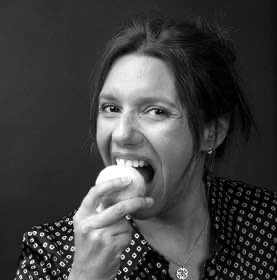
Andrea is a Spanish-Uruguayan photographer who has pursued her passion for photography professionally. After exploring various techniques on her own, including pinhole cameras and cyanotypes, Andrea took various courses at La Máquina Photography School and completed a master’s degree in artistic photography at Node Center. She then decided to explore the world of galleries and completed additional training in gallery management and direction. She had the opportunity to do an internship at Art+ Gallery in Shanghai to further develop her knowledge and skills in this environment. Her focus on social and cultural themes, combined with her background in anthropology, lead her to create photographs that challenge stereotypical gender roles, as seen in her artistic project (fe)MALE, which was featured in the group exhibition Seeing Him in Shanghai in 2021. In 2023, she published her first photography book, 98 Zhao Families, in Madrid, highlighting the lives of the Yao ethnic minority in Guizhou, China.
Andrea是一名西班牙裔乌拉圭摄影师,她一直在专业地追求自己对摄影的热情。在自己探索了各种技术后,包括针孔相机和蓝铅字,Andrea在La Máquina摄影学校参加了各种课程,并在Node Center完成了艺术摄影硕士学位。然后,她决定探索画廊的世界,并完成了画廊管理和指导方面的额外培训。她有机会在上海的Art+Gallery实习,在这种环境下进一步发展她的知识和技能。她对社会和文化主题的关注,加上她的人类学背景,使她创作出挑战陈规定型性别角色的照片,正如她的艺术项目(fe)MALE所见,该项目在2021年上海的群展“看见他”中展出。2023年,她在马德里出版了她的第一本摄影集《98个赵家》,突出了中国贵州瑶族的生活。
Artist statement
With her photography, Andrea explores how contemporary society is changing the perception of masculinity. A few years ago, it would have been unthinkable to consider these changes. However, the first steps of the feminist movement that emerged in the 18th century promoted freedom for both women and men and equality between them. Over the years, women have been taking up spaces and roles in society, also challenging the traditional notion of masculinity. The feminist movement has questioned and challenged toxic masculinity, which has been dominant in society. Currently, we are experiencing a crisis where men are awakening from their slumber and starting to question their behaviors toward society. There is a fear of profound change and a new world, where oppressive masculinity is left behind and diverse forms of being a man are created, free from gender stereotypes. This involves connecting with emotions, dialoguing with oneself and with others, and implementing new ways of educating future generations and being new fathers, in a masculinity free from prejudice.
Andrea用她的摄影探索了当代社会如何改变人们对男性的看法。几年前,考虑这些变化是不可想象的。然而,18世纪出现的女权运动的第一步促进了女性和男性的自由以及他们之间的平等。多年来,女性在社会中占据了空间和角色,也挑战了传统的男性观念。女权运动质疑和挑战了在社会中占主导地位的有毒男子气概。目前,我们正在经历一场危机,男人们从沉睡中醒来,开始质疑他们对社会的行为。人们害怕深刻的变化和一个新的世界,在这个世界里,压迫性的男子气概被抛在身后,不同形式的男人被创造出来,摆脱性别陈规定型观念。这包括与情感联系,与自己和他人对话,实施教育后代和成为新父亲的新方法,没有偏见。
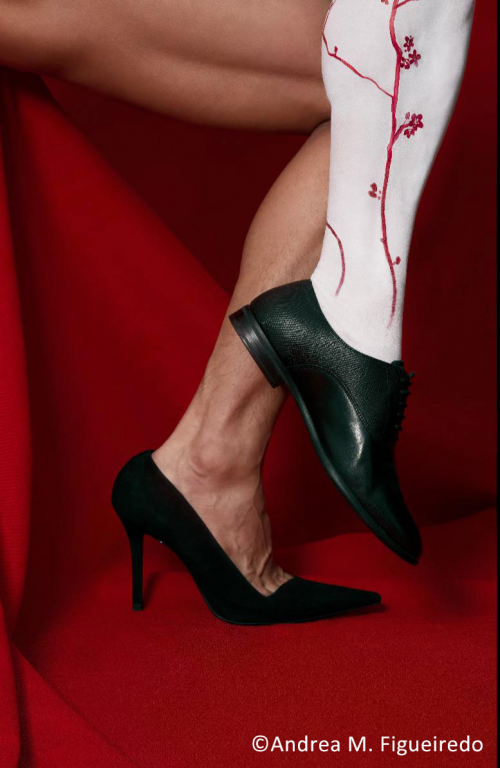
Etonmars
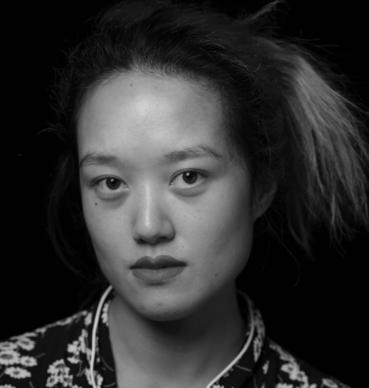
Etonmars began exploring the medium of photography at the early age of 13. The young version of her was proud of the quirky angles her camera goes. She went on to study moving image in UK after acquisition of English through 3 days of successive dreams. She had been filming and directing mainstream documentaries and drama series alongside indie films by friends, but the high intensity both physically and mentally of the industry broke her health, which was when she decided to turn inwards in search for a more inclusive and comprehensive way to artistic expression in life. The conflicting reality she faces daily and the tear between identities renders her in constant sensitivity about all images she catches in her stream of life.
Etonmars在13岁时就开始探索摄影这一媒介。年轻的她为她相机拍摄的古怪角度感到自豪。在连续三日的梦境中学会英文后,她到英国继续学习研究动态影像,之后她拍摄,执导主流媒体的纪录片,连续剧和朋友的独立影片。而行业中身体和精神的双重高强度使她的健康一度崩溃。她从此转向内观,溯寻一种对于生活本身更具包容性的综合艺术表达方式。她每天面对的矛盾现实和身份之间的撕裂使她对生活中捕捉到的所有图像保持敏感。
Artist statement
Etonmars utilizes a combination of film, photography, and multimedia tools to explore the intersection between gender, societal contexts, trauma and their relationship with the inner self. In an evolving metaphoric view, she tries to expand the boundaries that define us, and art.
摄影与摄像融合媒介创作者,作品探索性别身份的并峙,对既定社会边界、精神创伤与内在自我的关系提出质询。不断在隐喻中发展的创作,通过分离、重塑与再创造,拓展个人身份和艺术表达的界限。
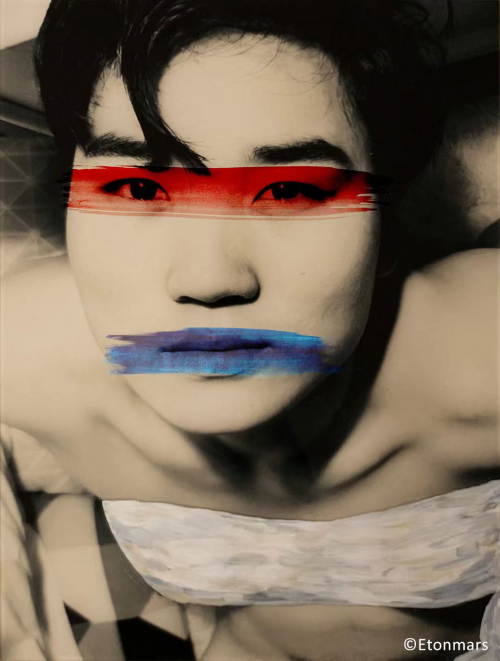
Guan Yiming
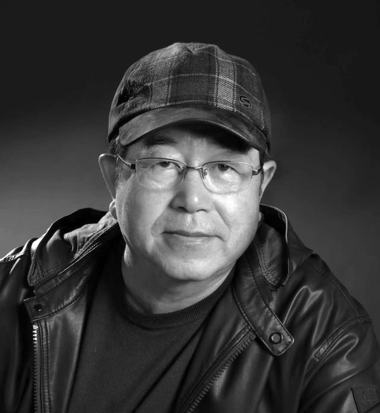
Guan Yiming has systematically photographed many cultural world celebrities, Shanghai cultural celebrities and Chinese and foreign film stars. With his series of works that depict contemporary pop icons and are key role players between East - West cultural exchange, he has held exhibitions, published books and won awards.
管一明系统地拍摄了许多世界文化名人、上海文化名人和中外电影明星。通过这些描绘当代流行偶像并在东西方文化交流中扮演重要角色的系列作品,他举办了展览,出版了书籍并获得了奖项。
Artist statement
Looking at the documentary function of photography in a broad sense, it can be said that the documentary characteristic is the ubiquitous "soul" of photography. First of all, let’s take a look at Mr. Guan Yiming’s first set of photos, how he is in the process of character photography "documenting" people’s living state, grasping the multiple interests of life.
This is a group of static pictures; characters or aestheticism appear in the natural space, photography works from the surface to record the survival form of the characters, especially the plane shape and instantaneous single picture, it seems difficult to grasp the unpredictable mentality of the characters. However, the brilliance of photographers lies in how to enter the depths of people’s hearts through these silent and static pictures, grasp the seven emotions and six desires of human beings, so as to give the characters in the picture "spirituality" and strengthen the photography of the depicted characters to reach a higher level.
"Photography is the combination of vision, mind and reason in one of the only important moments." Everyone who can take pictures may have this experience. Time is irreversible, the time has passed, no power can be restored. In the rapid passage of events, the essence of the moment with typical meaning and its brevity, and the mental transition of the character is much shorter than you usually feel in any case. Even when the photographer looks at the ordinary world with an extremely casual eye and integrates his unique views on life with a casual glance on the surface, the instantaneous power of the capture may show its strong vitality and make photography independent beyond other artistic styles.
从广义上看摄影的纪实功能,可以说纪实特性是摄影无所不在的“灵魂”。我们先来看管一明先生的第一组照片,看他是如何在人物摄影的过程中“纪实”人的生存状态,把握人生的多重情趣的。
这是一组以静态为主的画面,人物或是以唯美的造型出现在自然的空间,摄影作品从表面上看纪录的是人物的生存形态,尤其是平面的形和瞬间的单幅画面,似乎难以把握变幻莫测的人物心态。但摄影家的高明之处,就在于如何通过这些无声静止的画面走入人的心灵深处,把握人的七情六欲,从而赋予画面中的人物以“灵性”,使摄影的人物摄影强化到更高的层次。
“照片是眼光、心灵与理智在一个唯一重要的瞬间的结合。”每个会拍照的人可能都有这样的体会,时间是不可逆转的,时机过去了,任何力量也无法挽回。在迅速流逝着的事件中,带有典型意义的瞬间精华是及其短暂的,人物的心态转换更是无论如何要比你通常感觉到的要短暂得多。甚至当摄影家以极其随意的眼光观察这个平凡的世界,以表面上看去不经意的一瞥融入他对人生的独特见解,抓拍的瞬间力量就有可能显示出它强大的生命力,使摄影超越了其它艺术样式而独立出来。
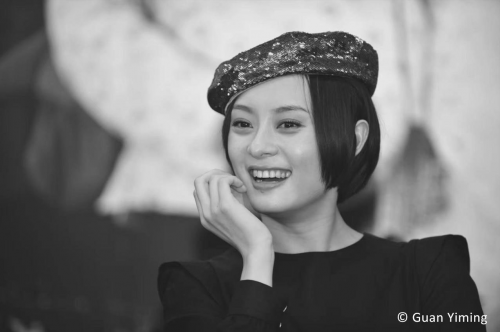
Maria Das Dores
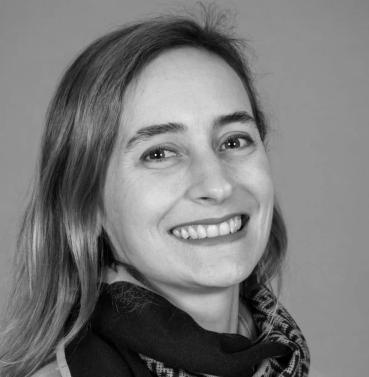
Maria was born in France in 1977, and studied at Ecole des Beaux Arts, Lyon, France and Concordia University, Montreal, Canada. She has had a varied and international career (Quebec 2002; Barcelona, as artist in residence, 2005; Auxerre, France, in the town’s heritage department, 2006; workshop on video morphing (Lux-Valence, France) 2006).
She came to Shanghai in 2006 to take up a position as visual art teacher in the French School. Since arriving in Shanghai, her works were shown in several exhibitions, both in Shanghai and in Beijing. As a teacher, she has successfully developed pupils’ artistic talents, allowing them to take part in Shanghai world expo exhibitions "Better City, Better Life" 2010. In 2011, she focused her work on the field of education, working full time as an art teacher, developing projects in art history in the school, creating project with international artists in the school as cultural referent.
Maria Das Dores 1977年出生于法国,曾就读于法国里昂美术学院和加拿大蒙特利尔康科迪亚大学。她有各种各样的国际职业生涯(魁北克2002;巴塞罗那,作为常驻艺术家,2005年;法国欧塞尔,在该镇的遗产部门,2006年;2006年视频变形研讨会(法国Lux-Valence)。
Artist Statement
In her series of works Maria is questioning the role of women in contemporary society by acting them out and documenting them.
These pictures question the interchangeability of female and male roles. The setting represents the collective fantasy of the luxury cars’ world. By their physical attitudes, the female characters take over and reinterpret these worlds.
在她的系列作品中,Maria通过表演和记录来质疑女性在当代社会中的角色。
这些照片质疑女性和男性角色的互换性。 这个场景代表了豪华汽车世界的集体幻想。 通过她们的身体态度,女性角色接管并重新诠释了这些世界。
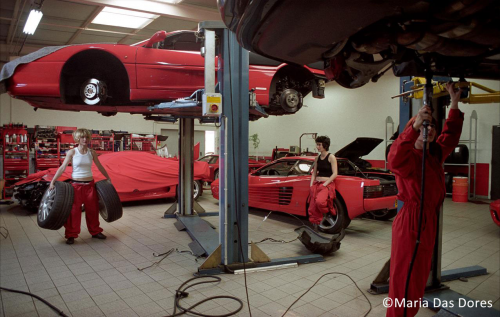
Roland Darjes
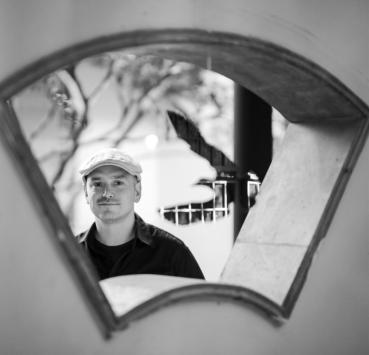
The son of a German actress and an American opera director, Roland Darjes grew up in a world of art. He attended schools with a focus on art in Germany and the United States before studying communication arts and interactive media in Hamburg, Germany.
After living in Europe, the United States, and Argentina, his fascination with other cultures and languages brought Roland to China many years ago. Here he has since blended the overwhelming inspiration of Shanghai’s city lights into his art.
With his camera, he is constantly on the lookout for spectacular impressions in the streets of Shanghai, using this photographic material as inspiration for his installations. He is always in search of new materials and techniques with which he, as a foreigner, can present his impressions.
"Shanghai is a great place to experiment with different materials to produce new forms of artwork," Roland says. During his time in China, he has worked with LEDs, lightboxes, neon lights, all kinds of prints, cutouts, and many glass and reflecting materials.
Roland Darjes 是一位德国女演员与一位美国歌剧导演之子,在艺术的世界中长大。他曾在德国和美国就读于重点艺术学校,后在德国汉堡学习传播艺术与互动媒体。
在欧洲、美国和阿根廷生活过后,对其他文化和语言的迷恋让Roland多年前来到了中国,在这里,他将上海城市灯光的浓郁灵感融入了自己的艺术中。
拿着相机,他不断在上海的街头寻找壮观的印象,使用这些摄影材料作为他装置艺术的灵感来源。他总是在寻找新的材料和技术,作为一个外国人,用以呈现自己的印象。
Roland说:“上海是个用不同材料实验新型艺术作品的绝佳地点。”在中国的这段时间里,他使用了LED灯、灯箱、霓虹灯、各种印刷品、剪纸以及许多玻璃和反光材料进行创作。
Artist statement
"Reflections of the City: Windows as Urban Narratives" explores the multifaceted stories told by city windows—what they disclose about the cityscape and its inhabitants. Utilizing lightboxes equipped with various transparent layers, the artist delves into the interplay of light emanating from windows and the reflections on the glass. This method reveals the complex layers of reality that compose urban life. Through the manipulation of light and reflection, the series aims to uncover the diverse narratives that windows in a city can tell, from the personal stories of its people to the architectural beauty of its structures. It’s an artistic investigation into the visible and the hidden, the light and its shadows, crafting a dialogue about the urban experience through the lens of its most transparent elements.
《城市的倒影:都市叙事的窗口》
探索了城市窗户所讲述的多面故事——它们透露出关于都市风景及其居民的信息。艺术家利用装配了的各种透明层的灯箱,深入探讨窗户散发出的光线反射在玻璃上的相互作用。这种方法揭示了构成都市复杂生活的现实层面。通过光线和反射的操纵,该系列旨在揭示都市窗户可以讲述的多样化叙事,从人们的个人故事到建筑结构的美学之美。这是对可见与隐藏、光与影的艺术性探索。通过最透明的元素,就都市体验进行了对话。”
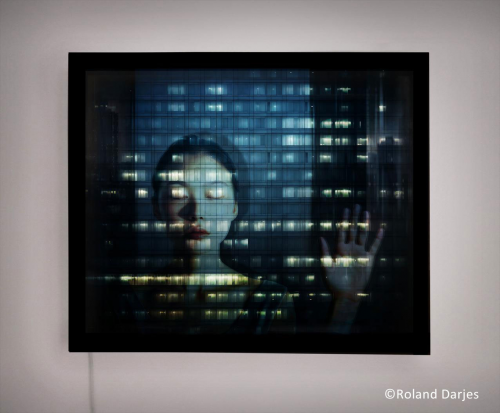
Susanne Junker
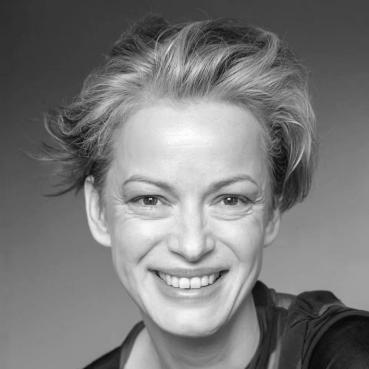
Born 1973 in Germany, she lives and works in Paris, France. Her work concentrates on identity research. Practicing observation of herself since early childhood, Susanne has used her own body as a canvas for interpretation of social themes, feminist and female behaviour and turned around her meiotic exposure to firstly break the preconception of her then current job as a model in the 1990s and her own struggle with what she describes as "24/7 demanded perfection". Since then, she embraced themes of gender identification, the objectification of women and the use of sexuality in media via photography, video, drawing and performance. Susanne Junker founded and directed stageBACK, an artist run space for experimental projects in Shanghai, China from 2008 – 2013. Since 2018, Susanne has been teaching “Researching Identity”, a photographic course at the China Academy of Art (CAA) in Hangzhou, China. Since 2020, Susanne has been a member of the Parisian photography collective “La Belle Étoile”.
Susanne 1973年出生于德国,她在法国巴黎生活和工作。她的工作集中于身份研究。Susanne从童年早期就开始练习观察自己,她用自己的身体作为画布来解释社会主题、女权主义和女性行为,并扭转了她的减数分裂暴露,首先打破了她在20世纪90年代作为模特的工作的先入之见,以及她自己与她所描述的“24/7要求完美”的斗争。从那时起,她接受了性别认同、女性物化以及通过摄影、视频、绘画和表演在媒体中使用性的主题。Susanne Junker于2008年至2013年在中国上海创建并指导了stageBACK,这是一个艺术家经营的实验项目空间。自2018年以来,Susanne在中国杭州的中国美术学院(CAA)教授“研究身份”摄影课程。自2020年起,Susanne成为巴黎摄影集体“La Belle Étoile”的成员。
Artist statement
"SELF-PORTRAITS WITH MASKS I – VI" With this new series, Susanne Junker explores the phenomenon of the usage and rise of emojis in our digital world, by adopting an anti-AI approach, by un-digitalising the emojis, printing them on paper, and creating masks of them on her own face. Each mask carries a topic and a conversation, covering Susanne’s entire face and leaving only her bare neck visible, which is representing the self within this self-portrait series.
“带面具的自画像I-VI” 在這個新系列中,Susanne Junker 探索了表情符號在數位世界中的使用和興起現象,採用了反人工智慧的方法,將表情符號取消數位化,將它們印在紙上,並自己創建了它們的面具臉。 每個面具都承載著一個主題和一段對話,覆蓋了蘇珊娜的整張臉,只留下她裸露的脖子,代表著這個自畫像系列中的自我。
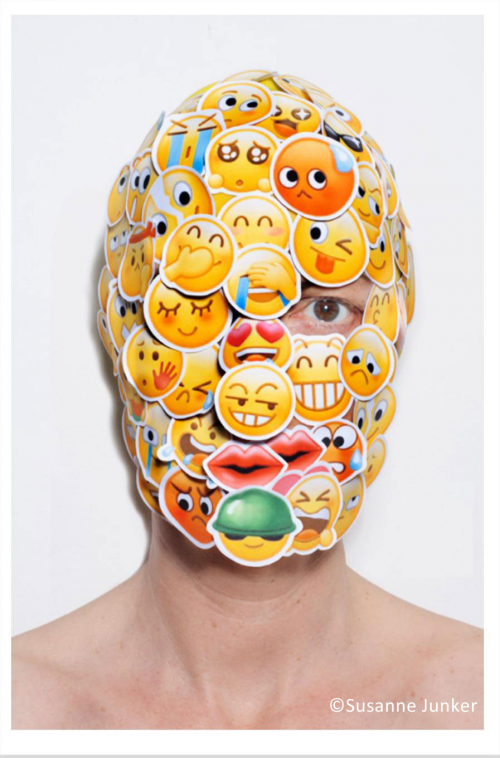
Zane Mellupe

Zane Mellupe is an artist and curator from Europe based in Shanghai. An important part of her work looks at social art, urban regeneration projects, and documentary research. Zane Mellupe is the founder of Yongkang Road Art Street and WhyWhyArt, developer and curator of the concept of Yuyuan Road Art Street, and co-founder of the Liudao Art Collective. She is also VP of EASA – The European Art and Science Association.
As an artist, Zane works mainly in contemporary photography and multimedia installations, where she deconstructs the popular understanding and reading of images, expanding it both conceptually and materially. She employs in her art works three mediums important to her: the image, the object and the body. The object merges with the image; the body reclaims its functions and enters the photographic image. These three mediums are in a dynamic of simultaneous coordination and opposition, in the same way of literary figures of speech.
A recurrent element in her work is a questioning of photography, treating the image as if it were an object, and also multiplying the suggestive powers of the image. This oeuvre becomes a visualization of metaphors that allow us to express mind states. She creates textual pieces, the “physical world of literature”, in an echo of her works. Photography and reality merge in Zane Mellupe’s work, a constant back-and-forth between the material and the conceptual.
Zane Mellupe是来自欧洲的艺术家和策展人,现居上海。她工作的一个重要部分涉及社会艺术、城市复兴项目和纪录片研究。Zane Mellupe是永康路艺术街和WhyWhyArt的创始人,豫园路艺术街概念的开发者和策展人,六道艺术集体的联合创始人。她也是欧洲艺术和科学协会EASA的副总裁。
作为一名艺术家,Zane主要从事当代摄影和多媒体装置,她解构了大众对图像的理解和阅读,在概念和物质上扩展了它。她在艺术作品中运用了三种对她来说很重要的媒介:图像、物体和身体。对象与图像合并;身体恢复其功能并进入摄影图像。这三种媒介处于一种同时协调和对立的动态中,就像文学修辞格一样。
在她的作品中,一个反复出现的元素是对摄影的质疑,将图像视为一件物品,同时也增加了图像的暗示力。这部作品变成了隐喻的可视化,让我们能够表达精神状态。她创造了文本作品,即“文学的物理世界”,以呼应她的作品。摄影和现实融合在Zane Mellupe的作品中,在材料和概念之间不断来回。
Artist statement
“Wutong says: globalisation is over, we need to deal with the consequences” is an ongoing series of works where Zane anthropomorphizes platan trees and gives tree-like traits to humans. Through revisiting trees, we revisit the normless nonbinary state in nature.
“吴彤说:全球化结束了,我们需要处理后果”是一个正在进行的系列作品,Zane将普拉坦树拟人化,并赋予人类类似树的特征。通过重温树木,我们重温了自然界中无规范的非二元状态。
